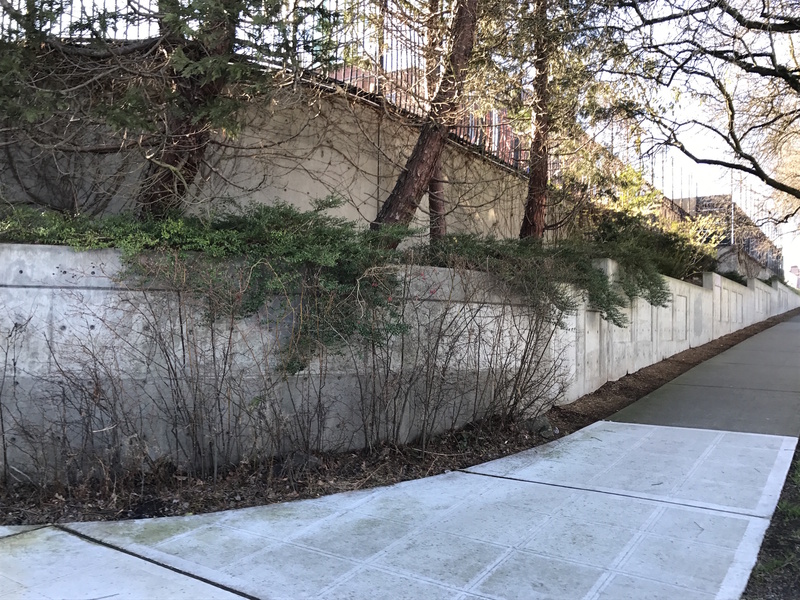Site Report 2

Example of how the foundation of a building (the University Child Development School) had to be raised up on one side to account for the large hill on Block 61, Taken on January 31st, 2017 by Marie Desprez.
This is a brief history of the University Branch of the Seattle Public Library, found on spl.org.

Map of the different blocks in Seattle created in 1908. Creator is Unknown but copyright is held by G.W. Baist.

General topographical map of Seattle created in 1909, by R.H. McKee.

Tree Roots found on 53rd Street that show how the tree roots have continued to grow despite urban development. Taken by Marie Desprez on January 31st, 2017.
From what I was able to learn about Seattle, it has always had a lot of hills. This is in part because it is surrounded by mountain ranges. It is also close to water, being near the Puget Sound. The earliest map I could find of Seattle was from 1909, and it is a topographical map of the entire city. The hills of Seattle influenced urban development because you can see as you walk throughout the city that a lot of buildings are built on hills, and a lot of the land hasn’t been evened out; you have to drive up and down steep hills as you drive throughout the city. On my block, the school (University Child Development School) looks like it was built on a foundation that is raised up on one side so that the building is even, and not slanted along the hill. I will provide a picture to further explain what that looks like.
I can also see that there were a lot of trees on my block even before the buildings went up. This is obvious because some of the trees are still there, and they are very tall and have thick, strong roots. Roots like that take time to grow, so it is clear that they were not planted recently. In some places the concrete is cut around the roots so that the roots are exposed. This is probably because the roots were creating cracks in the cement as they continued to grow after the land was developed. I like that Seattle is trying to preserve some of the natural land even as urban development continues.
I know that my block was developed a bit later than other parts of the University District; I looked at a map from 1908 and my block did not even exist yet. I also know that the University Branch of the Seattle Public Library was open in 1910, so it must have been the first building on what would later become the block that I am researching now. The building is on the National Register of Historic Places. I have not yet been able to find a primary document on this, but I hope to be able to later on in my research.
